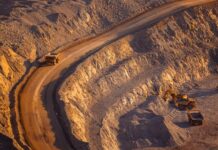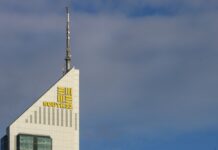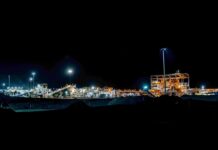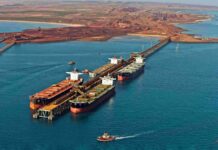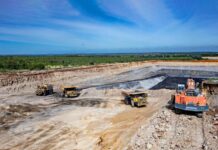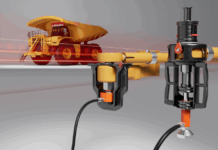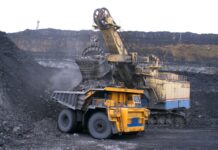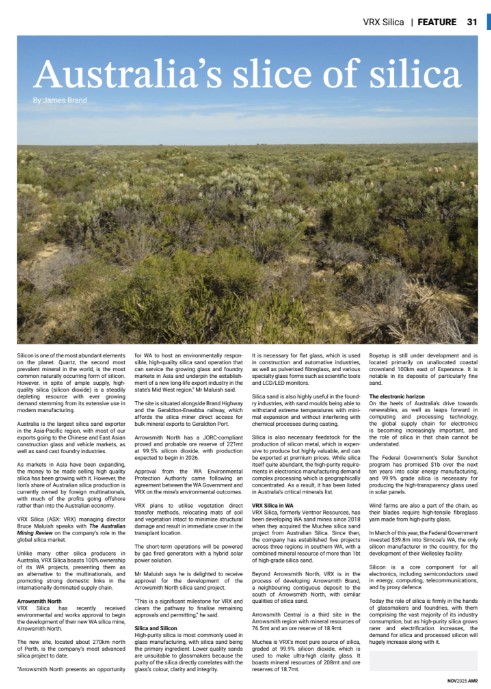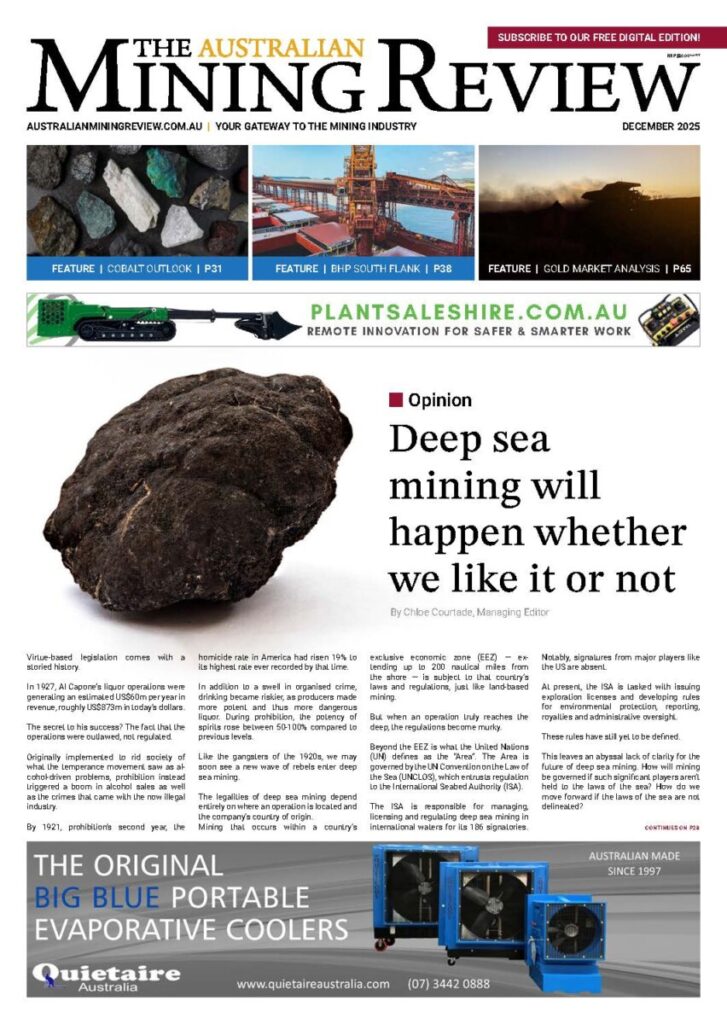Australia’s slice of silica
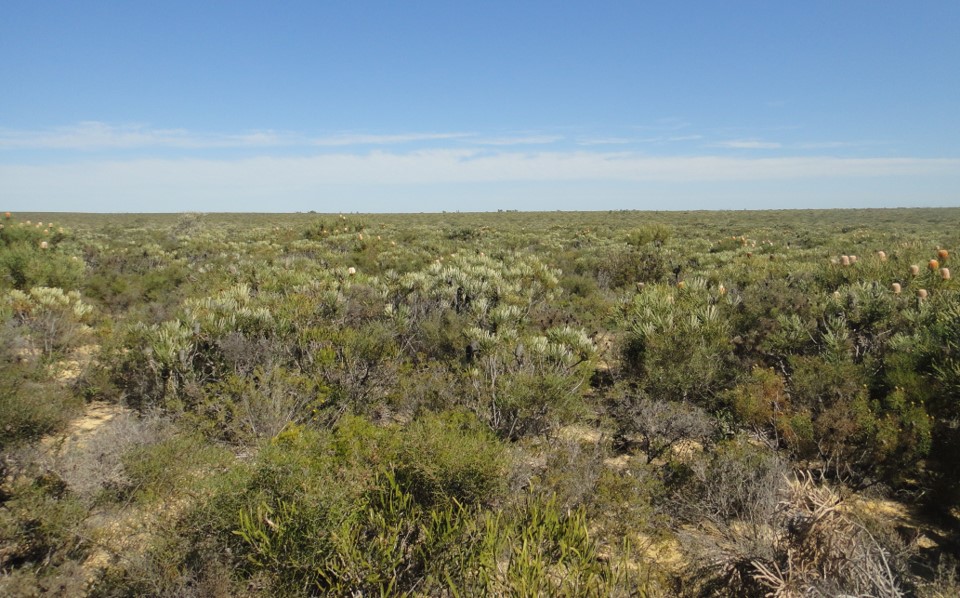
Silicon is one of the most abundant elements on the planet. Quartz, the second most common mineral in the world, is the most common naturally occurring form of silicon. However, in spite of ample supply, high-quality silica (silicon dioxide) is a steadily depleting resource with ever growing demand stemming from its extensive use in modern manufacturing.
Australia is the largest silica sand exporter in the Asia-Pacific region, with most of our exports going to the Chinese and East Asian construction glass and vehicle markets, as well as sand cast foundry industries.
As markets in Asia have been expanding, the money to be made selling high quality silica has been growing with it. However, the lion’s share of Australian silica production is currently owned by foreign multinationals, with much of the profits going offshore rather than into the Australian economy.
VRX Silica (ASX: VRX) managing director Bruce Maluish speaks with The Australian Mining Review on the company’s role in the global silica market.
Unlike many other silica producers in Australia, VRX Silica boasts 100% ownership of its WA projects, presenting them as an alternative to the multinationals, and promoting strong domestic links in the internationally dominated supply chain.
Arrowsmith North
VRX Silica has recently received environmental and works approval to begin the development of their new WA silica mine, Arrowsmith North.
The new site, located about 270km north of Perth, is the company’s most advanced silica project to date.
“Arrowsmith North presents an opportunity for WA to host an environmentally responsible, high-quality silica sand operation that can service the growing glass and foundry markets in Asia and underpin the establishment of a new long-life export industry in the state’s Mid West region,” Mr Maluish said.
The site is situated alongside Brand Highway and the Geraldton-Eneabba railway, which affords the silica miner direct access for bulk mineral exports to Geraldton Port.
Arrowsmith North has a JORC-compliant proved and probable ore reserve of 221mt at 99.5% silicon dioxide, with production expected to begin in 2026.
Approval from the WA Environmental Protection Authority came following an agreement between the WA Government and VRX on the mine’s environmental outcomes.
VRX plans to utilise vegetation direct transfer methods, relocating mats of soil and vegetation intact to minimise structural damage and result in immediate cover in the transplant location.
The short-term operations will be powered by gas fired generators with a hybrid solar power solution.
Mr Maluish says he is delighted to receive approval for the development of the Arrowsmith North silica sand project.
“This is a significant milestone for VRX and clears the pathway to finalise remaining approvals and permitting,” he said.
Silica and Silicon
High-purity silica is most commonly used in glass manufacturing, with silica sand being the primary ingredient. Lower quality sands are unsuitable to glassmakers because the purity of the silica directly correlates with the glass’s colour, clarity, and integrity.
It is necessary for flat glass, which is used in construction and automative industries, as well as pulverised fibreglass, and various specialty glass forms such as scientific tools and LCD/LED monitors.
Silica sand is also highly useful in the foundry industries, with sand moulds being able to withstand extreme temperatures with minimal expansion and without interfering with chemical processes during casting.
Silica is also necessary feedstock for the production of silicon metal, which is expensive to produce but highly valuable, and can be exported at premium prices. While silica itself quite abundant, the high-purity requirements in electronics manufacturing demand complex processing which is geographically concentrated. As a result, it has been listed in Australia’s critical minerals list.
VRX Silica in WA
VRX Silica, formerly Ventnor Resources, has been developing WA sand mines since 2018 when they acquired the Muchea silica sand project from Australian Silica. Since then, the company has established five projects across three regions in southern WA, with a combined mineral resource of more than 1bt of high-grade silica sand.
Beyond Arrowsmith North, VRX is in the process of developing Arrowsmith Brand, a neighbouring contiguous deposit to the south of Arrowsmith North, with similar qualities of silica sand.
Arrowsmith Central is a third site in the Arrowsmith region with mineral resources of 76.5mt and an ore reserve of 18.9mt.
Muchea is VRX’s most pure source of silica, graded at 99.9% silicon dioxide, which is used to make ultra-high clarity glass. It boasts mineral resources of 208mt and ore reserves of 18.7mt.
Boyatup is still under development and is located primarily on unallocated coastal crownland 100km east of Esperance. It is notable in its deposits of particularly fine sand.
The electronic horizon
On the heels of Australia’s drive towards renewables, as well as leaps forward in computing and processing technology, the global supply chain for electronics is becoming increasingly important, and the role of silica in that chain cannot be understated.
The Federal Government’s Solar Sunshot program has promised $1b over the next ten years into solar energy manufacturing, and 99.9% grade silica is necessary for producing the high-transparency glass used in solar panels.
Wind farms are also a part of the chain, as their blades require high-tensile fibreglass yarn made from high-purity glass.
In March of this year, the Federal Government invested $39.8m into Simcoa’s WA, the only silicon manufacturer in the country, for the development of their Wellesley facility.
Silicon is a core component for all electronics, including semiconductors used in energy, computing, telecommunications, and by proxy defence.
Today the role of silica is firmly in the hands of glassmakers and foundries, with them comprising the vast majority of its industry consumption, but as high-purity silica grows rarer and electrification increases, the demand for silica and processed silicon will hugely increase along with it.


